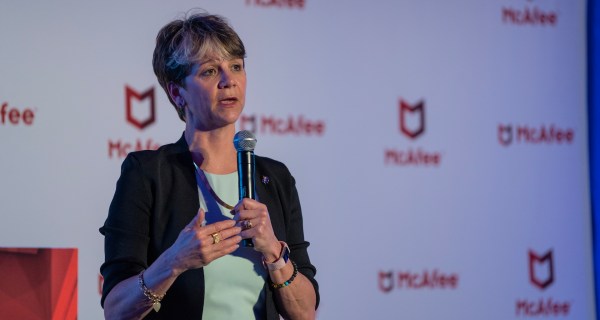 NASA CIO Linda Cureton (Photo: FedScoop)
NASA CIO Linda Cureton (Photo: FedScoop)Former U.S. Chief Information Officer Vivek Kundra is credited for coining the term “cloud first,” but the government is moving toward what NASA CIO Linda Cureton calls “cloud second, third and fourth.”
In an interview with FedScoop, Cureton said as cloud becomes more commercially viable and the practical aspects become more apparent, cloud will become that much easier to adopt and agencies will have multiple options.
“Look at something like FedRAMP and the barriers to cloud that it’s going to reduce,” Cureton said. “It’s going to give agencies benefits in terms of time, cost, efficiency, scale and flexibility – options are going to be right there for agencies to select.”
Of course there are security concerns with cloud, but Cureton said security is her top priority, whether it’s cloud related or not.
Cureton said NASA needs to make headway into moving its security program along strategically and making risk-based decisions. She also said NASA has a list of security audit findings, but even just going through those and checking them off is not sufficient to providing online security.
“I think that a lot of people are under the notion that ‘oh, well when you finish your list then you will be secure!’ Well no, we will just have a safe list and start creating another list because the adversaries are always changing their tactics and strategies. Threat keeps increasing so we have to keep up with the threat,” Cureton said.
Another large priority for Cureton is transitioning the agency to a new desktop service provider. She said the agency is in the middle of that transition, which includes downshifting from 10 contracts to one, which is always “a dicey situation for any CIO.”
Cureton said NASA is also looking into “bring your own device” opportunities. She said BYOD brings the potential for cost savings, but also the opportunity to better manage NASA’s mobile environment.
“The reality is that if we permit it or not people will bring their own devices in anyway, so BYOD will let us securely manage our environment and take away a number of vulnerabilities that mobility naturally creates.”
What the NASA administrator wants to happen, Cureton said, is to be able to have NASA employees work from anywhere, anytime and anyplace.
Along with BYOD, Cureton said she is currently working on using the working capital fund for shared commodity services provided by the CIO and also developing a roadmap for future technology services.
“One of the things that NASA is doing is looking at some of the grand challenges that exist relative to enabling the next generation of human space flight,” Cureton said. “Parallel to that, we’re looking at IT grand challenges and how addressing those challenges can help enable mission initiatives that are coming up in the next three to five to 10 years.”






